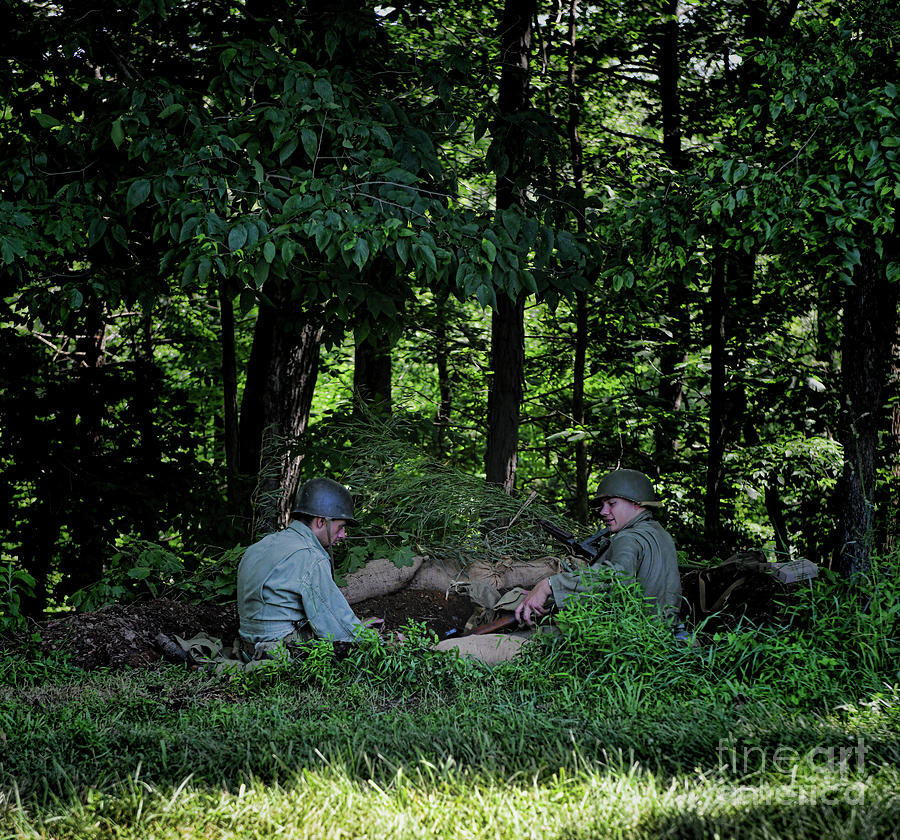Warfare has evolved dramatically over the centuries, but one chilling aspect remains unchanged—its brutal nature. The term "machine gun nest death" might not be a phrase you hear every day, but it carries a heavy significance in military history. This concept refers to the devastating power of machine gun nests, which have claimed countless lives throughout various conflicts. Today, we dive deep into this dark chapter to understand its impact on warfare, the lives lost, and how it shaped modern combat tactics.
Picture this: soldiers huddled in trenches, exposed to relentless fire from fortified machine gun nests. The sheer horror of facing such a formidable weapon is unimaginable. Yet, these nests were designed with precision and purpose, turning battlefields into deadly arenas. Understanding their role in history is crucial if we want to appreciate the sacrifices made by those who fought against them.
But why does this matter now? Well, the legacy of machine gun nests continues to influence military strategy and technology today. By exploring this topic, we can gain insights into both the past and present of warfare. So buckle up as we uncover the chilling details behind "the machine gun nest death" and its lasting impact on our world.
Read also:Erome De Sophie Rain A Comprehensive Guide To Her Artistry And Influence
Table of Contents
- The History of Machine Gun Nests
- Impact on Warfare
- Notable Battles Featuring Machine Gun Nests
- Tactics Used Against Machine Gun Nests
- Evolution of Machine Gun Technology
- Statistics and Casualties
- Human Stories Behind the Numbers
- Machine Gun Nests in Modern Warfare
- Lessons Learned from History
- Conclusion: Reflecting on the Machine Gun Nest Death
The History of Machine Gun Nests
Let's rewind the clock and explore how machine gun nests came into existence. The concept of fortifying positions with heavy firepower dates back centuries, but it wasn't until the late 19th century that machine guns truly revolutionized warfare. Weapons like the Gatling gun and later the Maxim gun set the stage for what would become one of the deadliest innovations in military history.
Early Developments
It all started with Richard Gatling's invention in 1862, which allowed for rapid-fire capabilities. However, it was Hiram Maxim's self-powered machine gun in 1884 that changed the game completely. These early designs paved the way for more advanced models, eventually leading to the creation of fortified machine gun nests during World War I.
By the early 20th century, armies realized the potential of combining machine guns with strategic fortifications. This led to the development of complex systems designed to maximize firepower while minimizing exposure to enemy attacks. And let's not forget, these nests weren't just random setups—they were carefully planned death traps.
Impact on Warfare
The introduction of machine gun nests transformed warfare in ways no one could have predicted. They became symbols of death and destruction, turning battlefields into nightmares for advancing troops. But how exactly did they impact military operations?
Shifting Tactics
One major effect was the shift in tactics. Armies had to rethink their strategies when facing fortified machine gun positions. Gone were the days of charging headfirst into battle; instead, stealth, coordination, and overwhelming force became essential for success.
Here's a quick rundown of how machine gun nests influenced warfare:
Read also:Kate Hudson Parents A Detailed Look Into Her Family Roots
- Increased emphasis on artillery bombardments to weaken defenses
- Development of specialized units trained to neutralize machine gun nests
- Greater reliance on air support and reconnaissance
Notable Battles Featuring Machine Gun Nests
History is filled with examples of battles where machine gun nests played a pivotal role. From the trenches of World War I to the jungles of Vietnam, these fortified positions left an indelible mark on military history. Let's take a closer look at some of the most infamous engagements.
World War I: The Battle of the Somme
One of the bloodiest battles in human history, the Battle of the Somme saw Allied forces suffer massive casualties due to German machine gun nests. Despite weeks of artillery bombardment, many nests survived intact, mowing down wave after wave of attacking soldiers.
Some key stats from this brutal conflict:
- Over 1 million casualties combined between both sides
- Machine gun nests credited with causing a significant portion of these losses
Tactics Used Against Machine Gun Nests
As machine gun nests grew more deadly, so did the tactics used to counter them. Military leaders poured resources into developing new methods for neutralizing these fortifications. Some approaches worked better than others, but all required ingenuity and bravery.
Specialized Units
Units like the British Stokes Mortar teams and American flamethrower squads were specifically trained to deal with machine gun nests. Their specialized equipment and skills gave them an edge in overcoming these formidable obstacles.
Here's how they typically operated:
- Approach under cover of smoke or artillery fire
- Use mortars or grenades to disable the nest
- Engage remaining defenders with close-quarters combat
Evolution of Machine Gun Technology
As warfare progressed, so did the technology behind machine guns. Innovations in design, materials, and manufacturing processes led to more powerful and reliable weapons. These advancements only increased the lethality of machine gun nests.
Key Developments
Some notable advancements include:
- Lightweight designs for easier deployment
- Improved cooling systems for sustained firing
- Advanced sighting mechanisms for greater accuracy
These improvements allowed machine gun nests to become even more effective killing machines, making them a constant threat on the battlefield.
Statistics and Casualties
Numbers don't lie, and the statistics surrounding machine gun nests paint a grim picture. Millions of lives were lost due to their relentless firepower, leaving deep scars on nations and families alike.
World War II Casualties
During World War II alone, it's estimated that machine gun nests were responsible for tens of thousands of deaths. For example:
- The Battle of Stalingrad saw Soviet forces suffer heavy losses from German machine gun nests
- D-Day landings faced intense resistance from fortified positions along the Normandy coast
These numbers serve as a sobering reminder of the devastation caused by these weapons.
Human Stories Behind the Numbers
While statistics provide a broad overview, it's the personal stories that truly bring the impact of machine gun nests to life. Soldiers who survived encounters with these death traps often carried the trauma with them for the rest of their lives.
A Soldier's Perspective
Take, for instance, Private John Doe, a young soldier serving in the U.S. Army during World War II. In his diary, he wrote about a harrowing experience facing a German machine gun nest:
"We were advancing through the forest when suddenly the firing started. It was like nothing I'd ever heard before—this constant, deafening roar. My comrades fell one by one, and I thought for sure it was my time too. But somehow, I managed to survive."
Stories like this highlight the human cost of machine gun nests and the bravery required to face them.
Machine Gun Nests in Modern Warfare
Although modern warfare has shifted towards technology-driven solutions, machine gun nests still play a role in certain conflicts. Their effectiveness in controlling key terrain features makes them valuable assets for both conventional and guerrilla forces.
Contemporary Uses
Today, machine gun nests are often used in:
- Urban combat zones
- Mountainous regions
- Border security operations
While their design may have evolved, the principle remains the same—concentrated firepower in a defensible position.
Lessons Learned from History
So, what can we learn from the history of machine gun nests? First and foremost, they remind us of the importance of adapting to new threats. Whether through technological innovation or tactical adjustments, staying ahead of the curve is crucial in any conflict.
Additionally, they underscore the need for empathy and understanding. The soldiers who faced these nests were ordinary people thrust into extraordinary circumstances. Their sacrifices deserve recognition and respect.
Conclusion: Reflecting on the Machine Gun Nest Death
In conclusion, the concept of "machine gun nest death" represents one of the darkest aspects of human conflict. From its origins in the late 19th century to its continued relevance today, this phenomenon has shaped warfare in profound ways. By studying its history, impact, and legacy, we can better appreciate the sacrifices made by those who fought against it.
Now it's your turn—what do you think about the role of machine gun nests in history? Leave a comment below and share your thoughts. And if you enjoyed this article, be sure to check out our other content exploring the fascinating world of military history.


